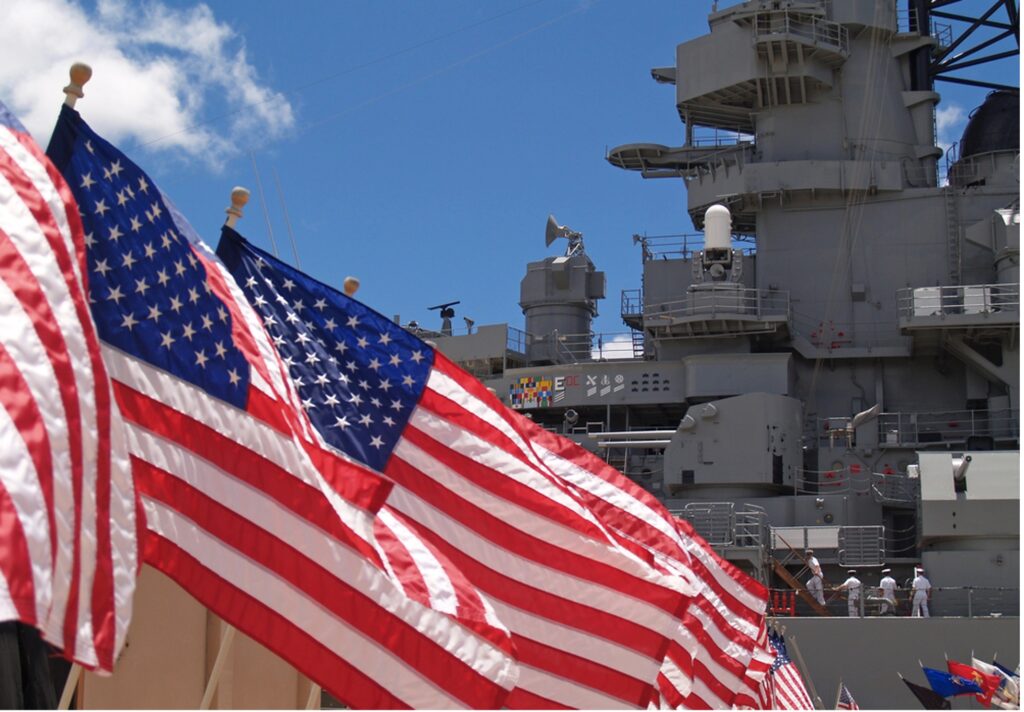As the morning mist rises over the horizon, the ocean unfolds, revealing a fleet of ships as majestic and formidable as the sea. This is the United States Navy, an institution woven into the fabric of American history.
From battles that have echoed through the ages to peacekeeping missions that have saved countless lives, the Navy stands as a military force and a symbol of courage.
From wearing a Navy hat to saluting the flag at sunrise, many icons and traditions have come to represent the Navy’s timeless honor and tradition. Symbols like the uniform and the fleet itself have become ubiquitous, representing a deep-seated respect for the Navy’s legacy.
Today, let us trace the origins of the US Navy to today’s modern times to learn more about this American stalwart’s enduring impact and future potential.
When Was The US Navy Founded?
The story of the US Navy begins during the tumultuous times of the American Revolutionary War. It was an era when the fledgling nation, fighting for its independence, first recognized the crucial need for naval power.
In October 1775, the Continental Congress established a naval force aiming to disrupt British supply lines and challenge the Royal Navy’s dominance. This modest fleet laid the foundation for history’s most powerful naval force.
Over the centuries, the Navy has been at the forefront of technological innovation and strategic military might. The transition from wooden sailing ships to ironclad steam-powered vessels in the 19th century marked one of the first major evolutions.
The introduction of the USS Monitor during the Civil War showcased the impact of industrial advances on naval warfare, setting the stage for future innovations. As technology progressed, so did the Navy, adapting and overcoming challenges with cutting-edge ships and submarines that have defined modern naval warfare.
Pivotal Battles And Naval Heroes
The US Navy has been pivotal in numerous conflicts that have shaped American and world history. One of the most iconic moments came during the War of 1812 when the USS Constitution earned the nickname “Old Ironsides” after cannonballs seemed to bounce off her sturdy oak hull during her victorious battle against the HMS Guerriere. This victory boosted American morale and established the Navy as a resilient and formidable force.
The Navy’s role was critical in World War II. The Battle of Midway, often considered the turning point of the Pacific Theatre, showcased strategic brilliance and heroic courage.
Naval commanders like Admiral Chester W. Nimitz orchestrated a stunning victory that hampered the Japanese fleet and shifted the momentum of the war in favor of the Allies. Heroes emerged from these battles, individuals whose names became synonymous with courage and leadership. Figures like Fleet Admiral William Halsey Jr. and Lieutenant Commander Edward O’Hare left legacies that continue to inspire naval officers today.
What Are The Navy’s Peacetime Roles?
While the clashing of canons might paint a typical picture of the Navy, its peacetime roles are equally heroic. Beyond their powers in warfare, the Navy is a vital player in humanitarian missions and peacekeeping.
From delivering aid to typhoon-stricken regions to evacuating civilians from conflict zones, the Navy’s commitment to global stability extends beyond mere military might. They are often first responders when disaster strikes, showcasing the softer side of sea power.
Culture And Traditions Of The Navy
The Navy’s rich traditions and culture keep high spirits on the high seas. From the daily ritual of raising and lowering the flag to the formal pomp of the Change of Command ceremonies, these rituals are woven into the Navy’s fabric, strengthening the bonds among sailors.
One of the most heartwarming of these traditions is the first kiss upon a ship’s return, where sailors and their loved ones reunite in a scene that could melt even the saltiest sea dog’s heart. These customs both bolster morale and create a bridge between the generations of men and women who have served.
What Are The Navy’s Future Prospects?
Steering into the future, the Navy continues to evolve, embracing cutting-edge technologies and new warfare strategies. As cyberspace becomes the new battleground, the Navy is not just about ships and submarines but also sophisticated cyber defense tactics. The rise of uncrewed vehicles and artificial intelligence in naval operations speaks volumes about the future direction of naval warfare.
What does this mean for the Navy moving forward? A continuous adaptation in skills, strategies, and roles to face the ever-changing global landscape ensures the Navy remains as relevant tomorrow as it has been for centuries.
The Everlasting Legacy Of The US Navy
As we have sailed through the story of the US Navy, it is clear that its influence stretches far beyond the oceans it patrols. From defending the nation in times of war to aiding in times of peace, the Navy’s legacy is a blend of bravery, tradition, and innovation.








